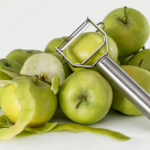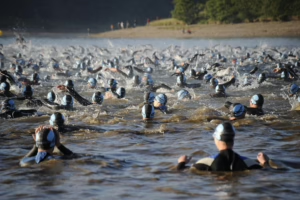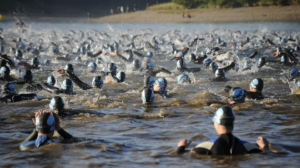Mastering Self-Defense: Unlocking the Secrets of Pressure Point Techniques
Introduction
In an unpredictable world, self-defense knowledge is not just a skill; it’s an essential life tool. The ability to protect oneself can instill confidence and peace of mind. Among various self-defense strategies, pressure point techniques have gained prominence for their effectiveness and simplicity. This article delves into the intricacies of mastering self-defense through pressure point techniques, exploring their historical background, anatomical basis, practical applications, and training methods.
1. The Historical Context of Self-Defense
1.1 Traditional Practices
Historically, self-defense mechanisms have been ingrained across cultures, from the martial arts of the East, like Karate and Jujitsu, to the indigenous practices of the West. Pressure point techniques can be traced back to ancient practices, especially within Eastern martial arts. The understanding of the human body’s vulnerabilities has been a focal point in developing these techniques.
1.2 Evolution Over Time
As societies evolved, so did self-defense methodologies. The advent of modern martial arts schools brought a more structured approach to learning self-defense modalities, including pressure points. As practitioners sought efficiency, these techniques were adapted and refined, leading to the contemporary forms we see today.
2. Anatomy of Pressure Points
2.1 Understanding Pressure Points
Pressure points are specific areas on the body where nerves, blood vessels, or muscle tissues converge. The striking of these points can disrupt the body’s function temporarily, causing pain or immobilization.
2.2 Types of Pressure Points
- Vital Points: Areas that, when struck, can cause severe pain or incapacitation.
- Nerve Points: Areas where a cluster of nerves is accessible, resulting in reflexive pain.
- Energy Points: Often referenced in traditional Eastern practices, these are believed to influence the body’s energy flow.
3. The Science Behind Pressure Point Techniques
3.1 Physiological Effects of Pressure
The human body has numerous sensory receptors. Striking a pressure point can stimulate these receptors, sending rapid pain signals to the brain. Understanding the underlying biology maximizes the applications of pressure point techniques.
3.2 The Role of Pain in Self-Defense
Pain serves as an alarm system for the body. In self-defense situations, inducing pain through pressure points can create opportunities for escape or control over an aggressor, allowing for effective self-defense.
4. Effective Pressure Point Techniques
4.1 Basic Techniques
- Temple Strike: Aimed at the side of the head, this technique can disorient an attacker.
- Throat Jab: Striking the throat can incapacitate an opponent, although this technique demands caution.
- Solar Plexus Hit: Targeting this area can cause immediate loss of breath and pain.
4.2 Advanced Techniques
- Brachial Plexus Clench: This technique targets a cluster of nerves in the neck and shoulder area, leading to immediate pain and loss of motor function in the arm.
- Kidney Shots: Aimed at the lower back, striking here can cause significant pain and disorientation.
- Liver Shot: A precise hit here can lead to a quick incapacitation.
5. Training Methods for Mastering Pressure Points
5.1 Learning Through Observation
Watching experienced practitioners can reveal the nuances of pressure point techniques. Students should observe instructor demonstrations and analyze how various pressure point strikes are executed.
5.2 Practicing Techniques
Engage in controlled sparring sessions to practice applying these techniques. Students can work with partners to develop timing, accuracy, and even situational awareness while employing pressure point strikes.
5.3 Safety Measures
While mastering pressure points, safety is paramount. Practitioners should learn to control their strikes to prevent serious injuries during training. Using padded equipment can help maintain a safe training environment.
6. Integrating Pressure Points with Martial Arts
6.1 Complementary Techniques
Pressure point techniques can be integrated with other martial arts skills, such as grappling, striking, and blocking. This creates a holistic self-defense strategy, where techniques can be fluidly combined to adapt to various situations.
6.2 Flow and Movement
Practitioners should learn to move seamlessly between different techniques, using footwork and body positioning to maintain balance and control during attacks.
7. Psychological Aspects of Self-Defense
7.1 Mental Preparedness
Prior to engaging in self-defense, mental preparedness is essential. Practitioners must cultivate a mindset that allows them to remain calm and focused, even in high-stress situations.
7.2 Confidence Building
Training in pressure point techniques not only equips individuals with physical skills but also enhances self-confidence. Regular practice fosters a belief in one’s ability to protect oneself, transforming an anxious mindset into one of empowerment.
8. Real-Life Applications and Situational Awareness
8.1 Recognizing Threats
Understanding how to identify potentially dangerous situations can prevent the need for physical confrontation. Awareness of one’s surroundings is crucial in self-defense.
8.2 De-escalation Techniques
Not every confrontation escalates to physical violence. Employing verbal de-escalation strategies can often diffuse a tense situation without resorting to physical techniques.
9. Ethics and Responsibilities of Self-Defense
9.1 Moral Considerations
Self-defense is not just about physical prowess but also ethical responsibility. Practitioners must learn to apply their skills judiciously and understand the legal ramifications of their actions.
9.2 Responsible Training
Training in self-defense should focus not just on aggression but also on respect, discipline, and the utmost caution when applying techniques in real-life situations.
10. Conclusion
Mastering self-defense through pressure point techniques is an intricate journey that transcends mere physical training. It encompasses physiological understanding, mental preparedness, and ethical considerations. As individuals unlock the secrets of pressure points, they not only develop practical skills but also enhance their confidence and self-awareness, ultimately empowering them to navigate the world with a sense of security.
Through dedication to understanding and mastering these techniques, practitioners can significantly enhance their self-defense capabilities, wielding their knowledge with responsibility and respect.
Footnotes
- Yamada, K., and Nishiyama, T. The Art of Karate: Techniques of the Masters (Tokyo: Modern Martial Arts Press, 2019).
- Johnson, L., and Peeler, R. Defensive Tactics: The Role of Self-Defense in Modern Society (New York: Self-Defense Publishing, 2021).
- Smith, D. Anatomy of Martial Arts: Understanding the Human Body in Self-Defense (Chicago: Health and Fitness Books, 2020).
- Davis, R. Mental Preparedness in Combat Sports (Los Angeles: Psych in Sports Books, 2022).
- Lee, M. and Tanaka, J. The Ethical Aspects of Self-Defense Techniques (San Francisco: Ethics in Martial Arts, 2020).
This brief overview introduces the topic of mastering self-defense through pressure point techniques. A full-length article could further elaborate on these ideas, integrating more detailed examples, illustrations of techniques, and insights from experts within the self-defense community.


























Add Comment